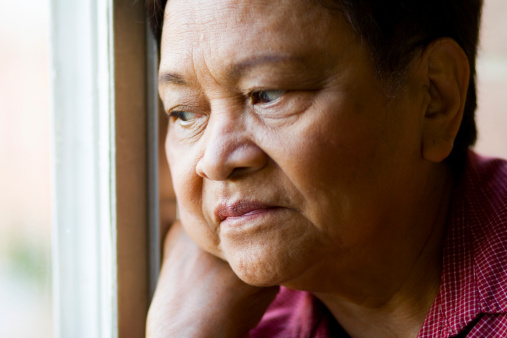
A visit to most long-term care facilities – a nursing home or assisted living facility – quickly reveals who wields the sword of control. Managers dispense orders to staff. Then able-bodied caregivers roam floors full of seniors compromised in either mind or body.
And frail residents dutifully follow the house rules.
Yet AgeSong assisted living – which has long considered older adults its revered elders – is taking another step in the fight for culture change inside the worlds of aging and mental health by introducing its Guru Project.
And it turns the tables on long-term care.
“Those residents who are the most difficult and challenging are our gurus,” says founder and CEO Nader Shabahangi, who oversees AgeSong’s four San Francisco facilities.
As a psychotherapist steeped in humanistic studies, Shabahangi has long insisted on the need for drastic new approaches within behavioral health and senior living.
Long-term care facilities, especially those populated by adults with dementia, often house residents who are strident, fearful, even combative; they may hit, yell, and throw either objects or tantrums.
The Guru Project deepens AgeSong’s core philosophy by helping staff uncover the root cause of so-called “bad behavior” – whether it’s physical, psychological or environmental.
Behavioral health staff focus on a humanistic approach rather than repair –which often means simply being present and listening.
“There’s no ‘fixing’ anyone here,” says Stephanie Rothman, AgeSong’s Guru Project liaison.
“Instead of doing ‘to’ you, we’re doing ‘with’ you,” adds executive director Janna O’Sullivan.
Suffering from Alzheimer’s disease, Carol Finkelstein’s father Ted was considered a troublesome and combative resident at his east Bay facility. He stole floor keys, wandered throughout the facility, pulled fire alarms, and barricaded himself in an elevator. He even admittedly touched a female resident’s breast.
“He was acting out because more and more restraints were being put on him,” sighs Finkelstein. “They didn’t have the ability to work with him.”
Supervisors called Finkelstein endlessly with this demand: “You need to do something about your father’s behavior.”
After moving him to AgeSong, Finkelstein was shocked by the facility’s silence, so she placed a phone call.
“Isn’t my father causing problems?” she asked.
“Of course he’s causing problems,” replied an AgeSong manager. “But they’re not his problem. Or your problem. They’re our problems to figure out.”
Shabahangi says AgeSong staff – not residents – shoulder this basic responsibility: “Constantly pay attention to the meaning behind a behavioral expression.”
“They never tell me there are issues because they don’t see them as issues,” explains Finkelstein. “It’s an attitude that’s just fantastic.”
There are several reasons for such behavior.
Residents may be frustrated at a loss of freedom. Perhaps the facility activities are boring. Maybe staff members aren’t paying attention to a resident. Or there’s not enough time spent in nature. It could be that a diaper needs to be changed, or hair combed. The root cause may be a deeper emotional issue – loneliness, or the loss of a loved one.
Guiding The Guru Project is a large multidisciplinary team that meets weekly to produce an Active Care Plan for each resident: executives, clinical directors, nurses, and both pre- and post-doctoral psychology interns. Also attending are Engagement and Education team members, along with staff who guide spiritual development. Finally – and perhaps most importantly – front line caregivers are involved, what AgeSong calls its “care partners.”
In fact, it’s these very care partners – who groom, toilet, and transport residents — who are frequently the centerpiece of The Guru Project.
“They don’t spend a lot of time learning about psychology and the dynamics of behavioral health,” says Rothman. But by interacting with the team of clinicians and staff – and attending the Guru Academy for an hour each week – they receive a crash course in psychology and mental health that will ease difficult interactions.
Consultants are also made available for more individualized training. And those residents on antipsychotic drugs will be enrolled in the Guru Registry to help prevent overuse.
Critical to AgeSong’s success is the education of psychology interns drawn from surrounding Bay Area schools trained in an existential-humanistic therapeutic approach and form the backbone of AgeSong’s behavioral health team.
Residents are typically visited weekly by a behavioral health professional.
Rothman says The Guru Project standardizes what already exists at AgeSong: “Having a plan written down that is implemented, checked off and assessed.”
Shabahangi has long infused his therapeutic work with a humanistic spin. In 1992, he founded the Pacific Institute to train psychotherapists inside a more humane, less prescriptive model. Two years later, after seeing the dismissive treatment of the elderly, he launched a Gerontological Wellness Program.
He eventually fused his compassionate counseling model with residential care, and today oversees AgeSong’s 200-plus residents.
Last fall’s keynote speaker at a California Elder Mental Health and Aging Coalition meeting, Shabahangi has noticed a shocking failure in behavioral health treatment: mental health professionals are now being infected by the same cookie-cutter approach common to physical health.
“It’s mindless, unsophisticated, almost a mathematical model,” says Shabahangi. “Therapists are becoming more like car mechanics.”
Rothman says the ability for residents to communicate extends far beyond verbal skills, and that the most potent connection comes through the eyes. Often, she says, residents don’t know her name or her occupation but know her as a friend.
“Everyone’s aware on a different level,” says Rothman.
At AgeSong, Shabahangi does weekly group supervision with his interns and asks them this simple question.
“Who is the client who irritates you most?”
Then he offers them an assignment in role reversals.
“Be that client, be that elder,” he tells them. “Think what’s it’s like to be in their shoes.”





